Sound-wise, the Sennheiser IE 600 deliver a really convincing performance. You can immerse yourself in a lot of listening pleasure with a decidedly coherent music reproduction that masters all parameters of sound reproduction convincingly. With these characteristics, the Sennheiser IE 600 turn out to be not only a piece of jewellery for listening pleasure but also recommend themselves as a working tool for the stage and the recording studio. Thanks to the extremely robust and thoroughly decorative construction and the interchangeability of the cable, long-term use should be possible. Sennheiser offers a really interesting alternative to the considerably more expensive IE 900 and even includes a balanced cable for the discerning listener.
- excellent, neutral sound
- convincing wearing comfort
- balanced connection cable included
The Sennheiser IE 600 impress with an extraordinarily honest sound that scores points with musicality and richness of detail. The design is sophisticated, the wearing comfort high, and the workmanship excellent. The result: an audiophile in-ear monitor with an exceptionally good price-performance ratio that earns a definite recommendation.
In the price range of around 700 euros, Sennheiser enters the fray with the new IE 600 in-ear monitor, which ranks between the IE 300 and IE 900 models in their audiophile product line.
A functional description is quickly done. The Sennheiser IE 600 are wired in-ear monitors for higher demands. The earphones are ergonomically shaped and are 3D-printed from a costly amorphous zirconium alloy in Germany. According to the manufacturer, the material is several times harder and more resistant to bending than steel. However, above all, it allows for exact and unlimited shaping, including any ear canals and cavities. Inside the enclosure, for example, there is a double resonator chamber that acoustically linearises low-frequency reproduction. At the same time, according to Sennheiser, the modern manufacturing facility ensures explicitly low tolerances and thus the smallest sound differences between the drivers.
The result is definitely robust and also looks very pleasing with its matt, yet slightly glossy, grey surface. The material is also scratch-resistant and resistant to corrosion.
Hidden inside are Sennheiser’s own dynamic 7mm True Response drivers, which have been optimised for the lowest possible distortion, according to Sennheiser. The Para-Amid amplified connection cable connects to the drivers via gold-plated MMCX connectors and terminates on an angled 3.5mm jack at the other end. A second cable with a balanced Pentaconn connector is also included, as well as a miniature case for transport.
In practice
As with most in-ear monitors, the Sennheiser IE 600’s cable is routed from behind the ear. This takes a bit of getting used to, but it makes for a more secure wearing experience, especially since the guide is mouldable and can thus be adjusted to the wearer’s own ear. The rotatable MMCX connection to the cable also contributes to this. This means that although the headphones cannot be put on in a flash, they can be put on firmly and securely. Thanks to the ergonomic design, the headphones fit deeply, are pressure-free and have surprisingly good passive damping, at least in my ears.
Sound
Sennheiser advertises an emphatically neutral sound, which is supposed to result from the design of the drivers and resonator chambers in the housing. In fact, I agree with this claim because the Sennheiser IE 600s delivered a wonderfully balanced, detailed sound image that was by no means bland or overly analytical but, on the contrary, musical with a pleasant intimacy. With these qualities, the Sennheiser IE 600 are not only recommended for demanding music listeners, but in my opinion, they are also ideal for stage and studio use. Our listening test took place via the Shanling DAP M3X, which offers both 3.5mm and Pentaconn connections.
The Sennheiser IE 600 delivers bass down to the lowest depths: deep, voluminous, tonally precise, contoured dynamic, undistorted and without overemphasis. The numerous gradations of the 808 bass drum in Adel Tawil’s Katsching were perfectly comprehensible and revealed the monitor qualities of a construction that delivers such details completely independent of the room acoustics. In the regular bass range, the IE 600 certainly showed the clean matching between the bass drum and electric bass on the Daft Punk track “Get Lucky”. This track also reveals good detail resolution in the midrange, including the well-embedded voice of Pharrell Williams and the funky guitar licks of Nile Rodgers, which always convey a certain warmth. Acoustic instruments also hit the right note throughout.
These headphones master dense rock/metal mixes with aplomb. They always sound coherent with good productions – from Alice in Chains to Slayer to Meshuggah. The individual character of the mix was reproduced well, but less convincing mixes were unmasked.
I did not detect any unintentional harshness. Rather, the IE 600 safely draws the appropriate boundary, which is essential for a sound engineer when assessing a mix. The subtleties of Whitney Houston’s voice in “Exhale” revealed themselves here in combination with the numerous discreet percussive elements in the upper spectrum. The Sennheiser IE 600s provided the necessary air in the treble spectrum but also delivered a degree of warmth in the sound image.
The reproduction of natural timbre, dynamics and space in a classical symphony orchestra also met with complete satisfaction. Especially with solo instruments such as the first violin in Beethoven’s Violin Concerto in D Major, Op. 61, the headphones we tested conveyed a fair amount of emotionality.
The stereo panorama was also one of the strengths of the Sennheiser IE 600. The stage was broadly fanned out with precisely located sound sources, which brought out added value in content through their delineation and accurate timing. For example, the doubled guitars in AC/DC’s “Fire Your Guns” suddenly stood out with particular clarity, revealing the “building material” in the wall of sound.
And as always, one of our favourite test tracks by the duo Boris Blank and Malia, “Celestial Echo”, shows how artfully a predominantly electronic production can be immersed in an artificial space. Here, the Sennheiser IE 600s were at their best. This also applied to the masterful performance of Robert Plant and Alison Kraus in “Can’t Let Go”. In conclusion, the balanced cable does not really deliver a plus in sound quality, but rather a higher level.
Technical specifications
- Ear couplingIn-ear
- Typeclosed
- Transducer principledynamic
- Frequency response (headphones)4 - 46.500 Hz
- Impedance18 ohms
- Sound pressure level (SPL)118 dB
- Cable length125 cm
What's in the box
- 3 pairs of silicone ear adapters (S, M, L)
- 3 pairs of foam ear adapters (S, M, L)
- Unbalanced para-aramid reinforced cable with 3.5mm connector
- Balanced para-aramid reinforced cable with 4.4mm connector
- Cable clip, Cleaning tool & Cleaning cloth
- Premium carry case with metal serial no. plate
- Presentation box with signed customer certificate and user manuals










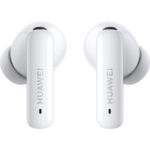

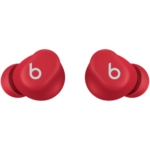

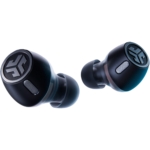

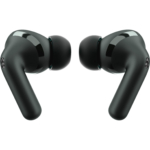







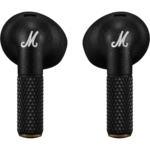

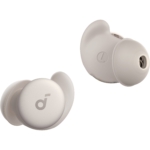

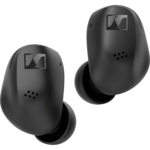

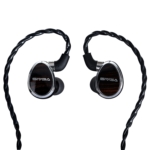




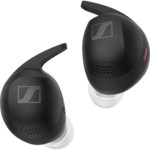








I have sensitive ear canals and want to get a high end (sounding) neckband that is comfortable, probably with ear loops. What do you recommend? It’s confusing to compare brands like Sennheiser and Denon with other options.